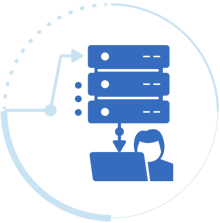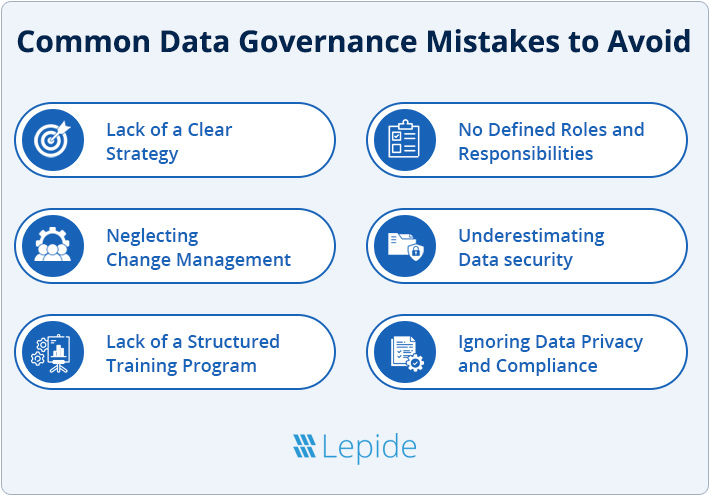Last Updated on December 11, 2024 by Satyendra

Businesses handle vast amounts of sensitive data, and efficient access to and management of this data are critical to security and regulatory compliance. It is challenging to effectively govern access to sensitive data, and mistakes can lead to security breaches, regulatory issues, and an inability to control data visibility.
The structure and procedures that guarantee the availability, security, integrity, and accessibility of an organization’s data assets are known as data governance. Regarding data management, data privacy, and data quality, it entails establishing precise rules, duties, and regulations. A system known as “data governance” ensures that only those with permission can interact with particular data, while limiting their actions, circumstances, and techniques.
Data Governance is a crucial component of data security for the following reasons:
- Effective data governance boosts strategic planning, improves business outcomes, and produces more accurate insights by giving decision-makers confidence in the data they use.
- Data governance promotes accountability and transparency by clearly outlining who owns what and how decisions are made. It ensures that individuals and teams understand their roles and responsibilities concerning data management and fosters a culture of data stewardship across your organization.
- By using data governance strategies, you can establish rules and expectations for the collection, archiving, and utilization of data. This encourages data accuracy, consistency, dependability, and completeness—all of which are essential for guiding business operations and helping decision-makers make well-informed choices.

Components of Data Governance
Establishing procedures, guidelines, and structures to guarantee effective data management across an organization is the aim of data governance. Let’s take a very basic look at each of the individual components.
- Data Governance Framework – The structure that describes the roles, responsibilities, and policies that govern and manage data inside the company is known as the data governance framework. This framework will serve as the foundation for all data governance initiatives.
- Data Governance Policies and Procedures – One aspect of data governance would be the development and documentation of rules and policies that offer direction for data security, privacy, processing, and quality. Business objectives and industry best practices must be in line with this. Programs for data governance must provide the fundamental data procedures for data management. Data issues are often tracked and fixed, data quality is monitored, data is shared, data is evaluated, automated data quality testing is carried out, and other rules are followed.
- Data Governance Roles and Responsibilities – Clearly define roles and responsibilities for data governance duties. Important roles include those of data owners, stewards, custodians, and consumers. Every job should be aware of their responsibilities and decision-making authority.
- Data Quality Management – The framework of data quality management entails putting policies and tools in place to monitor, assess, and improve data quality. This includes defining metrics for data quality, verifying the accuracy of data sources, and using data enrichment and cleaning techniques. To guarantee the timeliness, quality, consistency, and completeness of the data, procedures are required.
- Data Security and Privacy– The most important framework of Data governance is to ascertain that information is safe from breaches and unauthorized access, and that it conforms with applicable data protection laws, such as the GDPR or HIPPA. The main object of this framework is to protect sensitive data by putting data masking, access controls, and classification into practice.
- Data Governance Training and Education – Employees should get continual training and instruction on data governance’s guiding principles, regulations, and best practices. The structure created by this training would support a data-driven culture and guarantee constant adherence to data governance policies.
Common Data Governance Mistakes
Many organizations run into the same problems when implementing data governance strategies. Let’s explore some of the most common mistakes:

- Inadequate Data Quality Measure – Data quality is critical to the success of data governance. Organizations usually overlook strong data quality procedures, which leads to inconsistent and unreliable data. Implementing data profiling, validation, and cleansing processes ensures the suitability, quality, and completeness of the data utilized for decision-making. To avoid this, data governance should include processes for routine data quality inspections and data cleansing to maintain the reliability and integrity of the data.
- Lack of Clear Objectives and Accountability– Businesses often make the error of having poorly defined data governance goals and objectives. Without a clear attitude, organizations may struggle to coordinate their efforts to meet their objectives. Inaccurate system operation, data, and insufficient data security resulted from the lack of assigned roles in charge of data management inside the company. An organization should clearly define roles and duties in order to avoid this. These have to comprise data owners who are in charge of data consumption and accuracy, as well as data stewards who oversee the data’s lifecycle.
- Improper Education and Training– Data governance projects could be misinterpreted or executed incorrectly in the absence of adequate training and communication. Clear and constant communication of the importance, goal, and procedures of data governance is essential to preventing this. All pertinent employees should receive in-depth training in addition to this.
- Adapting the changes– One prevalent error in data governance is that, in the fast-paced digital world of today, changes are unacceptable, and that data governance initiatives may be hampered if they are not adjusted. Organizations need to update their data governance strategy proactively as laws, technology, and business needs change. Data governance stays current, efficient, and in line with corporate objectives when it embraces change.
- Neglecting Data Security and Privacy– In recent years, data security and privacy have emerged as one of the top concerns. Organizations that disregard data security and privacy precautions run the danger of suffering financial loss, legal repercussions, and harm to their brand. Large-scale data breaches might result from inadequate attention to privacy and data security.
- Not understanding Data Governance– Every organization should follow the practice of data governance. The technology isn’t one that can be bought. The business thinks that by investing in technology, they can readily meet the data governance criteria. Indeed, there are excellent data governance solutions available to assist you with duties like finding your data, enhancing its quality, and safeguarding it from threats. However, those technologies are only useful if you have well-defined data governance goals and know which tools you’ll need to reach them.
Strategies to Avoid Data Governance Mistakes
So, now we understand some of the most common mistakes, let’s take a look at some strategies you can implement so that you can avoid making these mistakes yourself:
- Define Goals – Establishing specific, well-defined objectives for your data governance projects is the first step. These objectives must be clear, attainable, and pertinent, and they ought to be in line with the organization’s overarching aims. To guarantee ongoing success, monitor and evaluate these goals on a regular basis.
- Data Quality Controls -Data governance relies majorly on data quality controls. Creating thorough data quality controls to guarantee the organization’s data’s dependability, accuracy, and consistency. Employ validation procedures to guarantee data integrity, data profiling to find problems with data quality, and continuous monitoring to uphold standards. To handle changing data quality issues, evaluate and enhance these controls regularly.
- Data Security and Privacy -Priority should be given to data security and privacy. Effective data security, compliance, and privacy policies and procedures are essential components of data governance plans. A few tactics, like data access limits and encryption, as well as a few techniques for carrying out regular audits to make sure that standards are being followed.
- Change and Adaptability-Regular evaluation and modification are necessary to keep the plan relevant and effective in the context of data governance. Technology advancements, shifting business needs, and new regulatory requirements should all be supported by an adaptable and flexible governance framework. Promote a culture of adaptability and flexibility inside your organization. Adapt to evolving regulations, embrace new technologies, and modify your company’s requirements. To stay ahead of the always evolving data ecosystem, regularly review and adapt your data governance practices.
Conclusion
Data Governance is the foundation of efficient data management. The processes it provides for the official handling of data assets within enterprises enable the maintenance of data quality, compliance, security, privacy, usability, operational efficiency, strategic decision-making, and trust.
However, weak data governance can lead to problems like decreased data quality, noncompliance, security breaches, operational inefficiencies, and resource misuse.
An organization’s operational, and strategic levels are all impacted by data governance. For data structure and consumption to be effective, data governance must be implemented in the ongoing iteration. Data governance has several benefits, including enhanced data value, reduced data management expenses, and standardized data systems, conventions, procedures, and regulations.
To find out more about how the Lepide Data Security Platform can help you create and maintain a successful Data Governance program, schedule a demo with one of our engineers.


 Group Policy Examples and Settings for Effective Administration
Group Policy Examples and Settings for Effective Administration 15 Most Common Types of Cyber Attack and How to Prevent Them
15 Most Common Types of Cyber Attack and How to Prevent Them Why the AD Account Keeps Getting Locked Out Frequently and How to Resolve It
Why the AD Account Keeps Getting Locked Out Frequently and How to Resolve It
